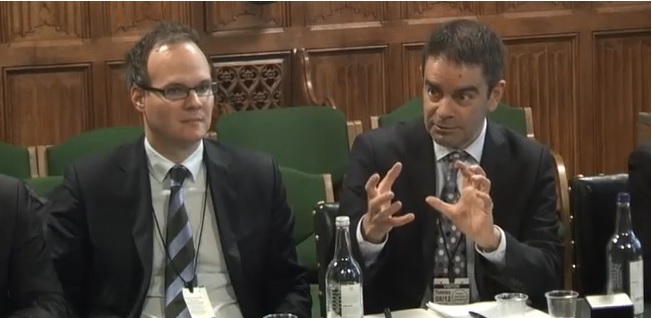The Energy and Climate Change select committee has heard that future home energy efficiency policy needs to build demand from consumers and use the existing supply chain to meet it.
As part of its inquiry into home energy efficiency and demand reduction, the committee took evidence yesterday from a range of figures within the energy market on proposals for future energy efficiency schemes. The panel answered questions for over two hours on a number of issues, most notably the need to address the supply chain in a way that previous government programmes failed to do.
Simon Roberts, chief executive at the Centre for Sustainable Energy, claimed the government had in the past “thrown grants at a programme to try and stimulate the market without thinking of the long term consequences of creating a dependence on constraint subsidy.” Using the Green Deal and its Home Improvement Fund as an example, he claimed the schemes had “squandered a lot of public money which could have been better spent.”
Roberts was joined by other members of the panel in calling for a more joined up approach to policy making than had previously been adopted, claiming the government needed to focus attention on an existing supply chain rather than releasing grants and “waiting for a supply chain to come forward.”
“The need to approach an existing supply chain which is currently working requires a level of complexity in policy thinking and orchestration rather than the mono-cultural approach taken so far. Simply thinking about one or another type of policy is quite a naïve approach that has been taken,” he said.
This multilateral approach was supported by Jan Rosenow, senior fellow at the Centre on Innovation and Energy Demand, University of Sussex, who said in the context of “getting to scale and achieving a high level of energy efficiency in the market”, there needed to be a combination of subsidy through tax, energy obligation funds and regulation. He added that there was “no other option” than for it to come through these measures.
Despite Roberts’ concerns over a reliance on subsidy, the need for improved finance options was also raised. Nick Eyre, co-director of the UK Energy Research Centre, claimed this factor was a significant barrier to success for the Green Deal. He said: “The key issue was that it was designed badly, particularly the golden rule which prevented people doing anything expensive.”
The golden rule stipulated that any expected savings on energy bills over a 25 year period must be equal to or greater than the cost of installing the measures. However, it also added that it was impossible to predict future energy savings over a long period of time, meaning they could never be fully accounted for when deciding which measures to install.
While the panel expressed approval for a pay-as-you-save scheme similar to the Green Deal, it added that greater finance was needed to make it work. Citing successful programmes in France and the USA that are “all based on very strong demand drivers and incentives”, Jan Rosenow said: “You have to engage with the supply chain, create demand and then enable people to finance what they want to finance. If you just put in regulation with no finance option in place, that’s not going to be enough. It’s about a combination of different instruments.”
“I believe the pay-as-you save scheme can play a role but if they are not subsidised they will be a niche product like the GD. You will never get to a mass-market product,” he added.
Dave Sowden, chief executive of the Sustainable Energy Association, said: “The able to pay sector needs policy props where the financial equation makes sense and it just didn’t for enough people under the Green Deal.”
Using the success of the feed-in tariff in boosting solar PV installations, he added: “When an adequate financial incentive exists, people tend to take it up in their tens of thousands.”






